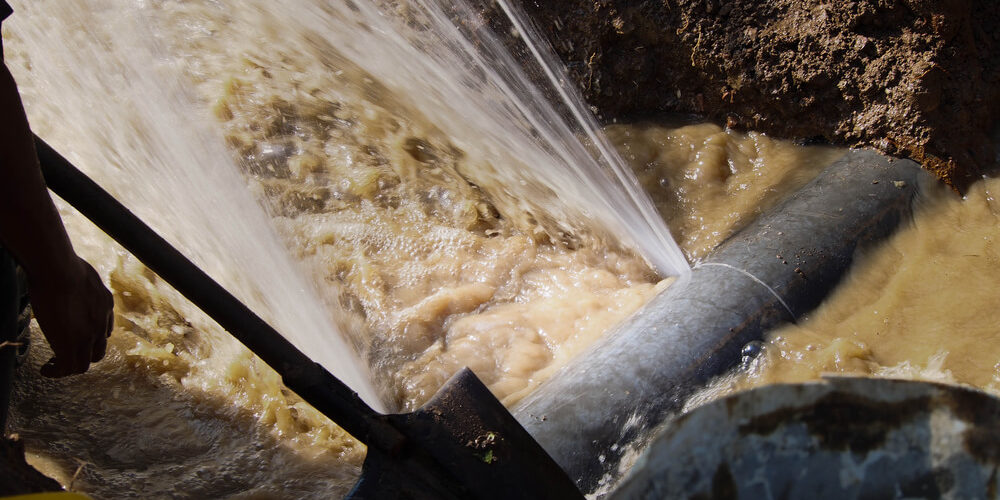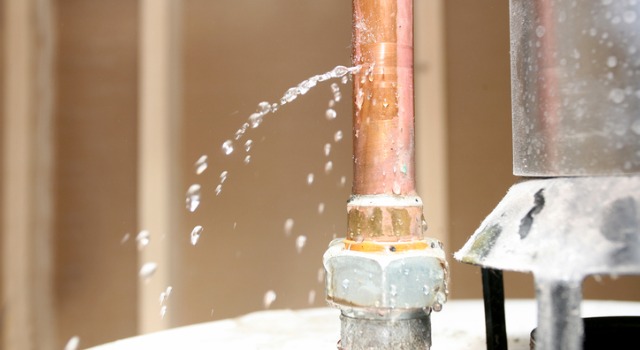Ruptured Pipes? No Panic! Exactly how to Detect and also Repair Promptly
Ruptured Pipes? No Panic! Exactly how to Detect and also Repair Promptly
Blog Article
How do you actually feel with regards to How to Install and Connect a New Dishwasher?

A burst pipe is a major emergency; you can just stand as you view water you pay a lot to rejoin with the earth. In even worse cases, you discover a swimming pool on your kitchen floor, which is an excellent journey risk, particularly if you have youngsters around. If the pipe that ruptured remained in your walls, trouble: you might need to paint that entire section.
Exactly how can a tragedy like a burst pipe be protected against and also managed? Well, by listening to your expert emergency plumbing professionals and complying with these regulations.
Just how do I know when my pipes have ruptured?
Rising and fall water stress
Pipelines do not just burst in a day. You may have observed that your cooking area faucet or shower doesn't run instantly when you turn the tap. It might stop for a few seconds and then blast you with more force than normal.
In various other circumstances, the water might appear normal at first, then decrease in pressure after a few seconds.
Damp wall surfaces and water stains
Before a pipeline bursts, it will leakage, the majority of times. If this consistent leaking goes unnoticed, the leak might finish right into a large tear in your pipeline. One very easy means to prevent this emergency is to keep an eye out for damp wall surfaces advertisement water discolorations. These water discolorations will certainly lead you right to the leakage.
Puddles under pipelines and also sinks
When a pipeline ruptureds, the discharge develops a puddle. It may appear that the pool is expanding in dimension, and also no matter how many times you mop the puddle, in a few minutes, there's one more one waiting to be cleaned up. Commonly, you may not be able to trace the puddle to any type of visible pipes. This is a sign to call a specialist plumber.
Untraceable leaking noises
Pipe bursts can take place in one of the most undesirable areas, like within concrete, inside wall surfaces, or under sinks. When your house goes quiet, you might have the ability to listen to an aggravatingly relentless trickling sound. Also after you have actually inspected your shower head as well as kitchen faucet, the trickling might continue.
Dear viewers, the leaking may be coming from a pipeline inside your wall surfaces. There isn't much you can do regarding that, except inform an expert plumber.
Shut down the Water
When water ices up, it broadens in volume by concerning 9 percent. As well as it broadens with tremendous pressure: The stress inside pipes might go from 40 extra pounds per square inch to 40,000 psi! No pipe can hold that much stress, so it bursts. The break may take place where the ice types, but regularly, it happens where water pressure locates a vulnerable point in the pipeline. That may be inches or even feet from the icy location. Discover the water shutoff valve and switch off the water to avoid even more damages. You may additionally require to shut off the electrical energy also, depending on where the leakages takes place as well as exactly how big it is.
Infected water
Lots of people assume a ruptured pipeline is a one-way outlet. Quite the contrary. As water spurts of the hole or laceration in your plumbing system, contaminants locate their method.
Your water may be infected from the source, so if you can, check if your water container has any type of problems. Nevertheless, if your drinking water is provided as well as purified by the local government, you ought to call your plumber quickly if you see or smell anything amusing in your water.
What do I do when I identify a ruptured pipe?
Your water meter will remain to run even while your water wastes. To minimize your losses, discover the main controls and also turn the supply off. The water mains are an above-ground framework at the edge of your building.
How to Fix & Detect a Leaking Pipe
How Do I Know if a Pipe is Leaking?
Leak detection tests can help you determine if your pipe has a leak. Even if you don’t see an apparent leak, you should still conduct leak detection tests regularly to save water and money—and prevent major damage to your home.
Water meter. It can be helpful to figure out what your usual water meter usage numbers are and then monitor them regularly. To monitor your meter, first, turn off all water faucets in your home. Check the meter and write down the numbers. In a few hours, check the meter again. If the numbers have changed, you have a leak. Water gauge. Use a water gauge to test your water pressure. Your showerhead should produce a certain amount of water pressure based on its model and design. If the pressure is lower than it is supposed to be for that specific showerhead, your home likely has a leak. Puddles. Look inside your bathroom, laundry, and kitchen sink cabinets. Puddles around the cabinets or around toilets, tubs, showers, and washing machines indicate the presence of a leaking pipe. You may also notice loose tiles, peeling or flaking paint, or mold caused by water accumulation. Napkin test. Even if you don’t see any puddles, you may still have a leak. You can test for water leaks in the bathroom, laundry, and kitchen by wiping below-sink connections with a napkin, paper towel, or piece of toilet paper. If it becomes damp, you probably have a leaking pipe under the sink. Discolored walls. Walls that are discolored—usually with brown or yellow stains—or bulging might mean that they have been impacted by water damage caused by a leaking pipe. Smell. A leaky pipe will create sitting water, and over time, that water may develop a musty smell. If your home smells musty, but you can’t locate the source, it may be due to a leak. Steps for Fixing a Leaking Pipe
A leaky drain can be remedied by tightening the pipe base, replacing the drain seal, caulking the rim, and tightening the pipe nut. Similarly, a leaking toilet pipe can be treated by tightening the packing nut. You may also need to replace the valve. A leaky faucet may just need tightening or replacement of the washers. If that doesn’t work, consider replacing your faucet. If your pipe has a hole in it, you may want to use a pipe leak sealer or pipe leak tape. This quick fix for water pipe leaks can also temporarily fix a copper pipe leak. https://www.ahs.com/home-matters/quick-tips/how-to-tell-if-pipes-are-leaking/

Hopefully you enjoyed reading our post about What to Know Before Installing a Dishwasher. Thanks so much for finding the time to read through our short article. Kindly take the time to distribute this write-up if you enjoyed reading it. I enjoy reading our article about How to Install and Connect a New Dishwasher.
Schedule Services
Report this page